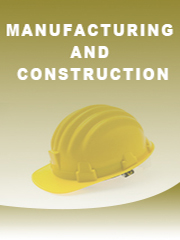Plate Finned Heat Exchanger is a type of heat exchanger design that uses plates and finned chambers to transfer heat between fluids. It is often categorized as a compact heat exchanger to emphasise its relatively high heat transfer surface area to volume ratio. The plate-fin heat exchanger is widely used in many industries, including the aerospace industry for its compact size and lightweight properties, as well as in cryogenics where its ability to facilitate heat transfer with small temperature differences is utilized.
This report aims to provide a comprehensive presentation of the global market for Plate-fin Heat Exchanger, with both quantitative and qualitative analysis, to help readers develop business/growth strategies, assess the market competitive situation, analyze their position in the current marketplace, and make informed business decisions regarding Plate-fin Heat Exchanger. This report contains market size and forecasts of Plate-fin Heat Exchanger in global, including the following market information:
- Global Plate-fin Heat Exchanger Market Revenue, 2018-2023, 2024-2029, ($ millions)
- Global Plate-fin Heat Exchanger Market Sales, 2018-2023, 2024-2029, (K Units)
Global top five Plate-fin Heat Exchanger companies in 2022 (%)
The global Plate-fin Heat Exchanger market was valued at US$ 1525.6 million in 2022 and is projected to reach US$ 2049.4 million by 2029, at a CAGR of 4.3% during the forecast period. The influence of COVID-19 and the Russia-Ukraine War were considered while estimating market sizes.
The major players in global Plate-fin Heat Exchanger market include Linde Engineering, CHART, Five Cryo, etc. The top 3 players occupy about 30% shares of the global market. Europe and China are main markets, they occupy over 50% of the global market. Aluminum Type is the main type, with a share about 90%. Petrochemical Industry and Dynamical Machine are main applications, which hold a share about 60%.
We surveyed the Plate-fin Heat Exchanger manufacturers, suppliers, distributors and industry experts on this industry, involving the sales, revenue, demand, price change, product type, recent development and plan, industry trends, drivers, challenges, obstacles, and potential risks.
Total Market by Segment:
Global Plate-fin Heat Exchanger Market, by Type, 2018-2023, 2024-2029 ($ Millions) & (K Units)
Global Plate-fin Heat Exchanger Market Segment Percentages, by Type, 2022 (%)
- Aluminum Type
- Stainless Steel Type
- Others
Global Plate-fin Heat Exchanger Market, by Application, 2018-2023, 2024-2029 ($ Millions) & (K Units)
Global Plate-fin Heat Exchanger Market Segment Percentages, by Application, 2022 (%)
- Air Separation Industry
- Petrochemical Industry
- Dynamical Machine
- Atomic energy & National defense industry
- Others
Global Plate-fin Heat Exchanger Market, By Region and Country, 2018-2023, 2024-2029 ($ Millions) & (K Units)
Global Plate-fin Heat Exchanger Market Segment Percentages, By Region and Country, 2022 (%)
- North America
- US
- Canada
- Mexico
- Europe
- Germany
- France
- U.K.
- Italy
- Russia
- Nordic Countries
- Benelux
- Rest of Europe
- Asia
- China
- Japan
- South Korea
- Southeast Asia
- India
- Rest of Asia
- South America
- Brazil
- Argentina
- Rest of South America
- Middle East & Africa
- Turkey
- Israel
- Saudi Arabia
- UAE
- Rest of Middle East & Africa
Competitor Analysis
The report also provides analysis of leading market participants including:
- Key companies Plate-fin Heat Exchanger revenues in global market, 2018-2023 (Estimated), ($ millions)
- Key companies Plate-fin Heat Exchanger revenues share in global market, 2022 (%)
- Key companies Plate-fin Heat Exchanger sales in global market, 2018-2023 (Estimated), (K Units)
- Key companies Plate-fin Heat Exchanger sales share in global market, 2022 (%)
Further, the report presents profiles of competitors in the market, key players include:
- Linde Engineering
- CHART
- Five Cryo
- Sumitomo Precision
- AKG
- Kobe Steel
- Triumph
- API
- Donghwa Entec
- Lytron
- Hongsheng
- Hangyang
- Yonghong
- Xinsheng
- Zhongtai Cryogenic
- Jialong
- Guanyun
- Fang Sheng
- KFAS
- Airtecc
- Outline of Major Chapters:
- Chapter 1: Introduces the definition of Plate-fin Heat Exchanger, market overview.
- Chapter 2: Global Plate-fin Heat Exchanger market size in revenue and volume.
- Chapter 3: Detailed analysis of Plate-fin Heat Exchanger manufacturers competitive landscape, price, sales and revenue market share, latest development plan, merger, and acquisition information, etc.
- Chapter 4: Provides the analysis of various market segments by type, covering the market size and development potential of each market segment, to help readers find the blue ocean market in different market segments.
- Chapter 5: Provides the analysis of various market segments by application, covering the market size and development potential of each market segment, to help readers find the blue ocean market in different downstream markets.
- Chapter 6: Sales of Plate-fin Heat Exchanger in regional level and country level. It provides a quantitative analysis of the market size and development potential of each region and its main countries and introduces the market development, future development prospects, market space of each country in the world.
- Chapter 7: Provides profiles of key players, introducing the basic situation of the main companies in the market in detail, including product sales, revenue, price, gross margin, product introduction, recent development, etc.
- Chapter 8: Global Plate-fin Heat Exchanger capacity by region & country.
- Chapter 9: Introduces the market dynamics, latest developments of the market, the driving factors and restrictive factors of the market, the challenges and risks faced by manufacturers in the industry, and the analysis of relevant policies in the industry.
- Chapter 10: Analysis of industrial chain, including the upstream and downstream of the industry.
- Chapter 11: The main points and conclusions of the report.
